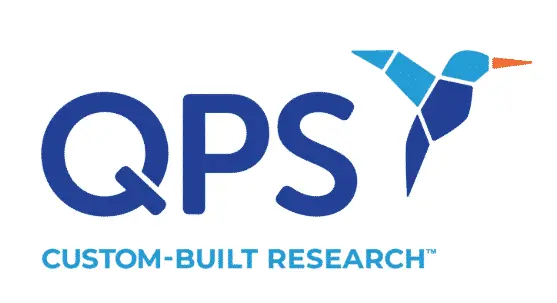“Polio anywhere is a risk to people everywhere.” This public health mantra gets to the root of the problem. Polio remains endemic in Afghanistan and Pakistan and outbreaks in New York state, London, and Jerusalem this year highlight the fact that, in our interconnected world, no country is immune.
There are three strains of the wild poliovirus (WPV). Type 2 was declared eradicated in 2015 and type 3 followed in 2019. Only type 1 WPV remains. The oral polio vaccine (OPV), introduced in 1961, and the injected inactivated polio virus (IPV), first used in 1955, are credited with reducing cases of polio by 99.9 percent since 1988. Eradication, however, remains elusive.
Vaccine-Derived Virus, Rare and Alarming
The OPV, which is used around the world and offers the advantages of low cost and ease of administration, contains a weakened, live virus. It is effective at stopping polio transmission in populations where it is spreading. However, it can cause polio in about two to four children per 2 million doses. Furthermore, in places with low immunization rates, the live weakened virus can spread to nonimmune contacts and mutate into a virulent strain called a vaccine-derived poliovirus (VDPV). While extremely rare, such cases are occurring in wealthy countries for the first time in several years. Genetic analyses of the cases in London, New York, and Jerusalem indicated that the viruses were VDPV.
In countries that have switched to the IPV vaccinations, the disease has gradually been eliminated. The eventual goal is to use injections everywhere. The World Health Organization (WHO) recommends including at least one dose of IPV for all countries using OPV. Because polio causes irreversible paralysis in less than one in 200 people, the recent cases of paralysis in New York and Jerusalem suggest that many other people have been infected.
“We probably could never have gotten on top of polio in the developing world without the [OPV] but this is the price we’re now paying,” said Dr. Paul Offit, director of the Vaccine Education Center at the Children’s Hospital of Philadelphia.
COVID-Related Setbacks
COVID-19 disrupted childhood vaccinations worldwide. The WHO and UNICEF reported that 23 million children missed routine vaccinations in 2020, an increase of 3.7 million from 2019. Consequently, outbreaks of circulating VDPV tripled from 2019 to 2020, with over 1,100 children paralyzed.
Cases are on the rise in the Americas as well. As Carissa Etienne, director of the Pan American Health Organization (PAHO) commented in a September 2022 media briefing, “It’s been nearly 30 years since the Americas became the first global region to wipe out wild polio, thanks to comprehensive and coordinated vaccination campaigns. But dwindling vaccination rates, worsened by the COVID-19 pandemic, have left many of our populations unprotected. Let’s be very clear — polio is not a treatable disease. Prevention is the only option. And prevention is only possible with vaccines.”
Etienne also warned that polio vaccination coverage is below 80 percent in nearly all South American countries. Twelve countries in the region are at high or very high risk of an outbreak due to low vaccination rates.
Deploying New Tools Against Outbreaks
New strategies do offer some optimism. A data management software platform is being used in Pakistan to improve the accuracy of vaccination data and help health workers identify and reach unvaccinated children. According to Abid Hasan, project manager for the Zenysis, the startup coordinating the effort, “Not everyone is a data expert – but if you can go on a platform, go into a dashboard, and see all your data into one workspace then you can reach a zero-dose child and their family, and get them vaccinated.”
At the grassroots level, communication tactics aim to build trust and counter disinformation and vaccine hesitancy. James Giir Thiik is an effective social mobilizer with UNICEF’s Integrated Community Mobilization Network in South Sudan. Paralyzed by polio as a child, he now promotes vaccination to families as he wheels himself from place to place. “I don’t want any other child to suffer like me,” he said, “when vaccines have come to save their lives.”
Lastly, and importantly, a novel oral polio type 2 vaccine, which has a substantially lower risk of causing VDPV, is now available and was the first vaccine to ever receive emergency use authorization by the WHO. Introduced in March 2021, the new vaccine was first used in Nigeria and Liberia. Through the first half of 2022, more than 370 million doses have been administered in more than 20 countries.
Did you enjoy this blog post? Check out our other blog posts as well as related topics on our Webinar page.
QPS is a GLP- and GCP-compliant contract research organization (CRO) delivering the highest grade of discovery, preclinical and clinical drug research development services. Since 1995, it has grown from a tiny bioanalysis shop to a full-service CRO with 1,100+ employees in the U.S., Europe and Asia. Today, QPS offers expanded pharmaceutical contract R&D services with special expertise in neuropharmacology, DMPK, toxicology, bioanalysis, translational medicine and clinical development. An award-winning leader focused on bioanalytics and clinical trials, QPS is known for proven quality standards, technical expertise, a flexible approach to research, client satisfaction and turnkey laboratories and facilities. Through continual enhancements in capacities and resources, QPS stands tall in its commitment to delivering superior quality, skilled performance and trusted service to its valued customers. For more information, visit www.qps.com or email info@qps.com.








